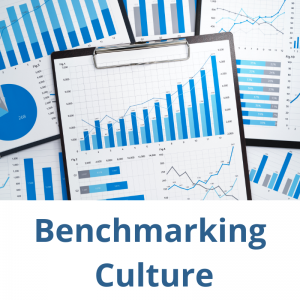 A recent survey by Strategy& shows that the gap between the culture that a successful organization needs and what they have today is widening. The minimum benchmark for “good” culture is rising. A robust positive work environment has become table stakes and no longer a nice to have. How does your company stack up versus these survey results?
A recent survey by Strategy& shows that the gap between the culture that a successful organization needs and what they have today is widening. The minimum benchmark for “good” culture is rising. A robust positive work environment has become table stakes and no longer a nice to have. How does your company stack up versus these survey results?
Will your current culture deliver success?
The Katzenbach Centre Global Culture 2018 Survey asked participants if they believe their culture needs to evolve in the next 3-5 years in order to succeed, grow, and retain the best people. In their 2013 survey, 51% believed their culture needed to shift. In the most recent data collected in 2018, this number has risen to 80%.
When you think about your current culture, if there was one attribute you could bring into your organization to make it more successful what would that be? More accountability, more innovation, or maybe more agility? Aligning your culture with your company vision and related strategic plan is where leading organizations are focusing their attention. In fact, 65% of leaders surveyed that they agree that culture is more important to performance than strategy or operating model.
How good is your current culture?
Too many leaders default to employee engagement surveys as a measure of their culture. Unfortunately, these assessments don’t actually measure behaviors. In the Strategy& survey, they asked participants if what they say about their culture is consistent with how people act. Another chasm appears in the results. Should we be impressed that 63% of Board members and C-suite leaders agree? On the other side of the gap are the employees where only 41% agree.
This is a common gap that I see with my clients when we do a cultural assessment. The view from the top is very different from the front lines. Another common divide is between regions. Because culture is so leader behavior-oriented, a division on the west coast can have a very different culture from one elsewhere across an organization’s geography.
The workplace culture elephant in the room
This divide between what leaders believe is happening and what employees are experiencing is one of the biggest issues with workplace culture today. When we ask employees to pick 10 values to describe their current culture, we are always looking to see how the espoused values show up.
If your company values are teamwork, integrity, customer service, innovation and accountability and none of them (and this is common) show up in the top 10, what does this say? Are these really the most important values for success? Were these values chosen despite the fact that it’s very difficult for the leadership team to actually live into them? If you’re interested in exploring the truth about your current culture, book a complimentary discovery session with us for more information.
Making culture a priority
Actions speak louder than words. This statement is the backbone of organizational culture. You can talk about values and you can post them all over the office. However, it’s the conduct of the leaders, and the behaviors they condone and reward that drive culture. These acts translate into hiring decisions, reward and recognition, and even the language used in policy and guideline documents.
So interestingly enough, when asked if culture is an important senior leadership agenda item, 71% of Board and C-suite respondents said yes. However, only 48% of employees see it as being a significant senior leadership priority.
Moving from statistic to success
In this world of overwhelming amounts of data, it’s easy to get caught up in survey results. Whether we’re measuring customer service net promoter scores, or patient satisfaction, or cost per transaction, at the end of the day Albert Einstein’s perspective is as true today as it was back in the early 1900s. “The definition of insanity is doing the same thing over and over again but expecting different results”.
Without action or personal transformation by the leaders, there will be no change. Your culture will remain static. In an environment of low unemployment where the deciding factor for candidates is an organization’s culture, you can no longer just profess to have a good culture. It’s time to get real, pay attention and take action.


